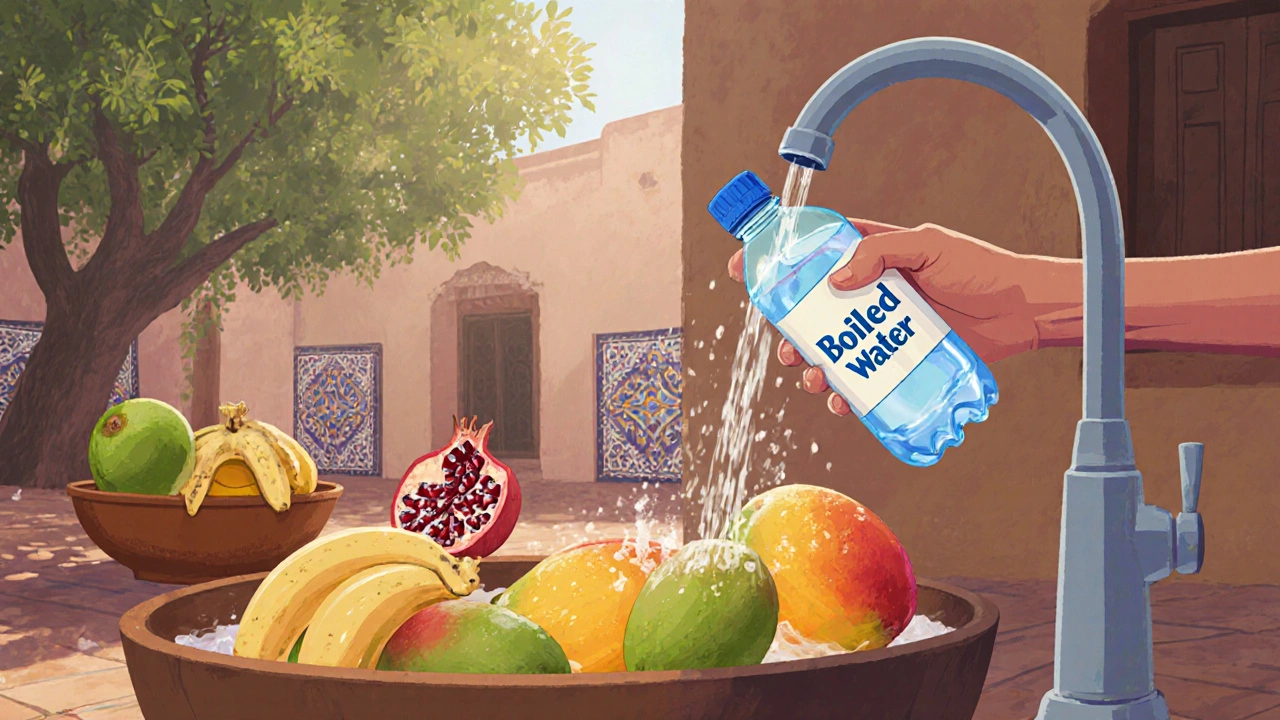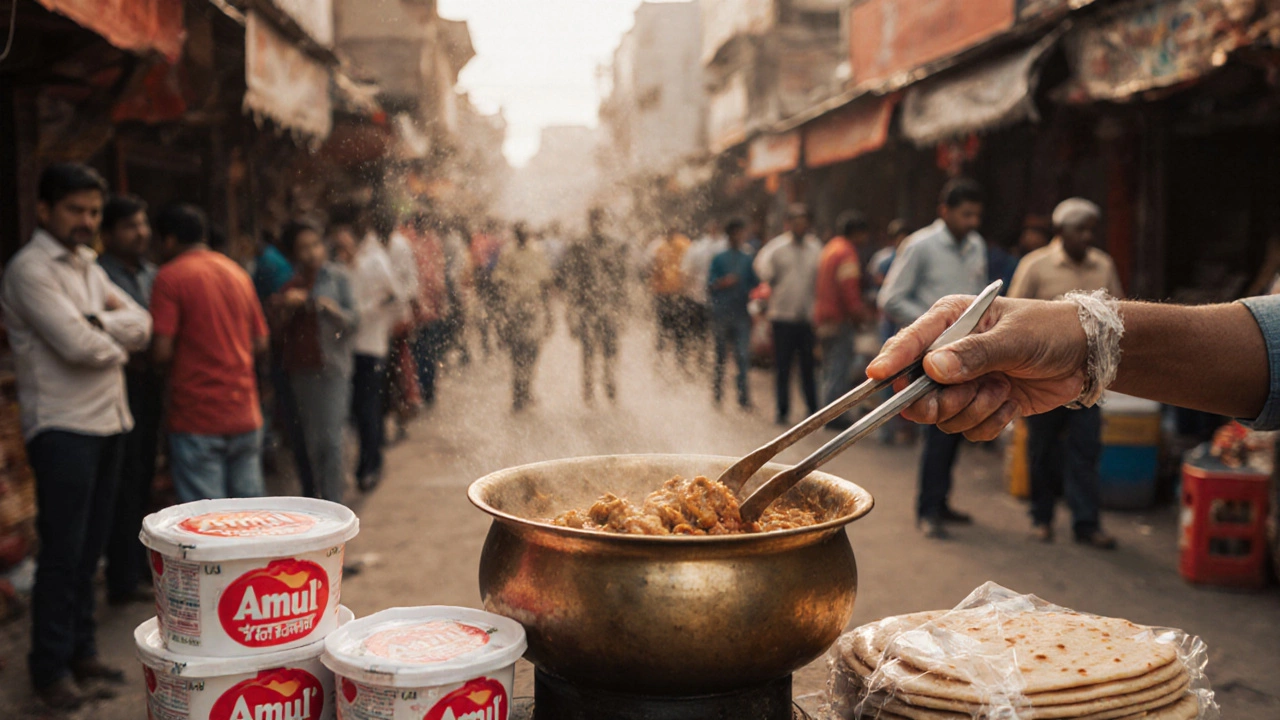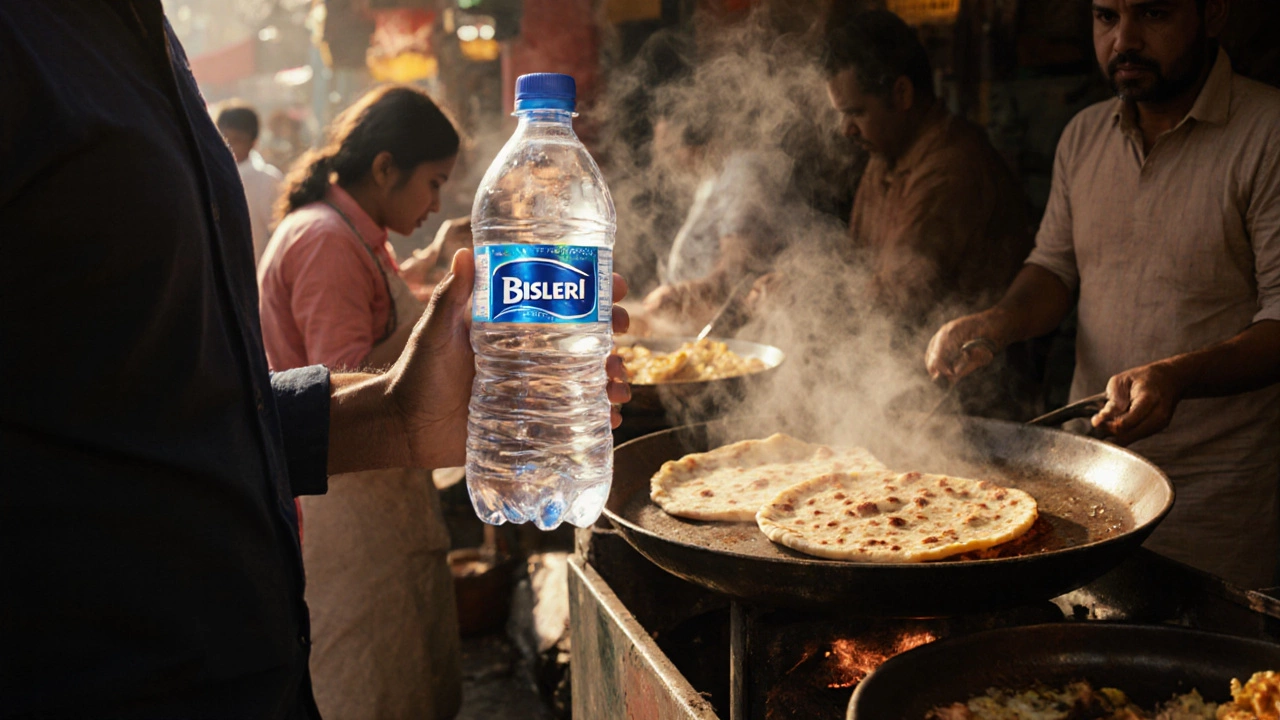India Food Safety Checker
Check Your Food Safety
Answer these questions based on your current food choices to see if they're safe for travelers in India.
Every year, thousands of travelers enjoy the vibrant flavors of India - from sizzling street-side kebabs to fragrant biryanis - but not everyone leaves without a stomachache. If you’ve ever woken up in a Delhi guesthouse wondering what you ate, you’re not alone. The truth is, getting sick in India isn’t about bad luck. It’s about what you eat, how you eat it, and where you eat it. The good news? You can enjoy authentic Indian food without risking illness. You don’t need to stick to bland hotel buffets or avoid local food entirely. You just need to know what to look for.
Drink Only Bottled or Boiled Water
Tap water in India isn’t safe to drink - even if it looks clear. Ice cubes in drinks? They’re often made from tap water. Bottled water is cheap and widely available, but check the seal before you open it. Look for branded bottles like Bisleri, Aquafina, or Kinley. Avoid refill stations that claim to purify water - many don’t. If you’re in a remote area with no bottled water, boil tap water for at least one full minute. Let it cool before drinking. Use bottled or boiled water for brushing your teeth too. A simple rule: if you wouldn’t drink it straight from the tap, don’t use it for anything that touches your mouth.
Eat Food That’s Hot and Fresh
Heat kills bacteria. That’s why hot, freshly cooked food is your safest bet. Look for stalls or restaurants where food is cooked right in front of you and served steaming hot. A sizzling tawa of parathas, a bubbling pot of dal, or a freshly fried pakora are all good signs. Avoid food that’s been sitting out - even for an hour. Buffets, especially outdoors, are risky. Cold curries, room-temperature rice, or lukewarm chutneys left uncovered are breeding grounds for E. coli and Salmonella. If the food isn’t piping hot when it hits your plate, walk away. It’s not worth the risk.
Peel or Wash Fruits and Vegetables Yourself
Salads, fruit platters, and raw veggies are common in Indian meals - but they’re also high-risk. Vegetables are washed in tap water, even at fancy restaurants. Fruits like mangoes, bananas, and papayas are often rinsed in the same water used to clean dishes. The fix? Eat only fruits you can peel yourself - bananas, oranges, pomegranates, and coconuts are safe. Avoid pre-cut fruit or fruit salads. If you want a salad, ask for it without dressing and wash the leaves yourself with bottled water. A quick rinse under a stream of purified water makes all the difference. Carry a small bottle of water just for washing produce.
Choose Busy Street Stalls Over Empty Ones
It sounds counterintuitive, but the busiest food stalls are often the safest. High turnover means food is cooked fresh and doesn’t sit around. A stall with a line of locals eating is a strong signal. Locals know which vendors serve safe food - they’ve been doing it for generations. Avoid stalls with no customers, or ones where the cook handles money and food without washing hands. Look for vendors who wear gloves, use tongs, and keep their cooking area clean. A clean apron and a covered food cart aren’t luxury - they’re your early warning signs.

Skip Raw Dairy and Unpasteurized Products
India’s love for fresh milk, yogurt, and paneer is real - but not all of it’s safe. Raw milk sold from carts or small dairies can carry bacteria like Listeria and Brucella. Stick to branded, pasteurized dairy. Look for Amul, Mother Dairy, or Nandini on the label. If you’re buying yogurt, choose sealed packets over loose servings from big tubs. Same goes for paneer - avoid homemade or unbranded versions unless you’re sure it’s made with boiled milk. If you’re unsure, skip it. There are plenty of safe, delicious dairy options out there.
Carry Oral Rehydration Salts and Probiotics
Even with all the precautions, your stomach might still rebel. That’s normal. Your body is adjusting to new bacteria. Keep oral rehydration salts (ORS) in your bag - they’re cheap, effective, and sold in every pharmacy. Mix one packet in a liter of bottled water and sip it slowly if you feel dehydrated. Probiotics help too. Take a daily capsule with live cultures (like Lactobacillus) before and during your trip. They help balance your gut flora and reduce the chance of severe diarrhea. Don’t wait until you’re sick to start them - begin a week before you leave.
Handwashing Is Non-Negotiable
You don’t need fancy sanitizer - just soap and water. Wash your hands before every meal, after using the bathroom, and after touching money or public surfaces. If soap isn’t available, use an alcohol-based hand sanitizer with at least 60% alcohol. Don’t just wipe your fingers - scrub for 20 seconds, like you’re singing ‘Happy Birthday’ twice. Many travelers get sick not because of the food, but because they touch their face after handling dirty surfaces. Keep your hands clean, and you cut your risk in half.

Know the Red Flags
Some signs are obvious: flies buzzing around the food, uncovered dishes, greasy hands handling your order, or a cook spitting into the pot. But others are subtler. A vendor who doesn’t change gloves between orders. A refrigerator that feels warm to the touch. A restaurant that doesn’t serve bottled water by default. These aren’t just rude - they’re dangerous. Trust your gut. If something feels off, it probably is. You don’t have to be rude - just polite and firm. Say, “I’m sorry, I need this cooked hotter,” or “Can I get this with bottled water?” Most vendors will understand.
What to Do If You Get Sick
If you do get sick, don’t panic. Most cases of traveler’s diarrhea last 2-3 days and clear up on their own. Stay hydrated. Drink ORS. Eat bland food - plain rice, toast, bananas. Avoid spicy, fatty, or dairy-heavy meals until you feel better. Don’t take antibiotics unless prescribed. Over-the-counter meds like loperamide (Imodium) can help slow diarrhea, but they don’t cure the infection. If you have a fever over 101°F, blood in your stool, or vomiting for more than 24 hours, see a doctor. Pharmacies in major cities have English-speaking staff and can help. Don’t wait until you’re too weak to move.
Food That’s Generally Safe in India
Not everything is risky. Many Indian dishes are naturally safe because of how they’re made:
- Roti or chapati - freshly cooked on a hot griddle
- Dal - boiled for hours, served hot
- Chai - made with boiled water and milk
- Boiled eggs - if the shell is intact and cooked through
- Fruit you peel - bananas, oranges, pomegranates
- Branded yogurt and paneer - Amul, Mother Dairy, etc.
These are your go-to meals. Stick to them when you’re unsure. They’re flavorful, filling, and low-risk.
Final Tip: Don’t Fear the Food
The goal isn’t to avoid Indian food - it’s to enjoy it safely. Millions of people eat street food in India every day without getting sick. You can too. It’s not about perfection. It’s about smart choices. Choose hot, fresh, and clean. Avoid raw, cold, and unsealed. Wash your hands. Drink bottled water. And when you take that first bite of spicy masala dosa, savor it - because you’ve earned it.
Can I drink tap water in India if I boil it first?
Yes, boiling tap water for at least one full minute kills most harmful bacteria and viruses. Let it cool before drinking. Use boiled water for brushing teeth and washing produce too. Bottled water is still the easiest option in cities, but boiling works well in rural areas where bottled water isn’t available.
Is Indian street food safe to eat?
Street food can be safe - if you pick wisely. Choose stalls with high customer turnover, where food is cooked fresh and served hot. Avoid anything sitting out for hours. Look for vendors who use clean utensils, wear gloves, and keep their cooking area tidy. Locals are your best guide - if they’re lining up, it’s likely safe.
Should I avoid salads and raw vegetables in India?
Yes, unless you wash them yourself. Salads and raw veggies are often rinsed in tap water, which can carry harmful bacteria. Stick to fruits you can peel - bananas, oranges, coconuts. If you want a salad, ask for it plain and wash each leaf with bottled water before eating.
Are packaged snacks safe in India?
Most sealed, factory-packaged snacks like biscuits, chips, and nuts are safe. Check the expiration date and make sure the packaging is intact. Avoid open bins or loose snacks sold by street vendors. Stick to branded items from supermarkets or convenience stores.
What should I do if I get traveler’s diarrhea?
Stay hydrated with oral rehydration salts (ORS) and drink bottled water. Eat bland foods like rice, toast, and bananas. Avoid spicy, fatty, or dairy-heavy meals. Don’t take antibiotics unless prescribed. If you have a fever, blood in stool, or vomiting for more than 24 hours, see a doctor. Most cases clear up in 2-3 days with rest and fluids.
